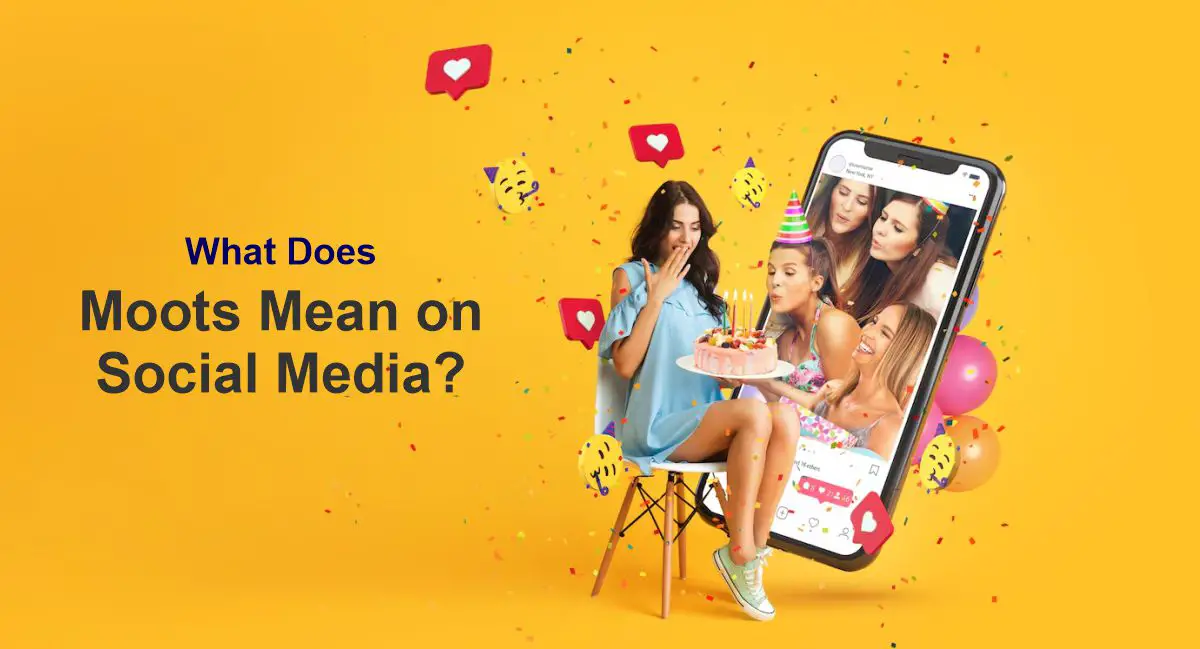In the ever-evolving world of social media slang, “moots” has emerged as a widely used and meaningful term among users, particularly on platforms like Twitter (now X), TikTok, and Instagram. Short for “mutuals,” the term refers to users who follow each other back. Unlike the traditional term “followers,” which denotes a one-way connection, moots imply a reciprocal relationship. In many cases, the relationship goes beyond a simple follow and turns into a casual online friendship.
Moots are an essential part of modern online culture, helping users build communities and foster deeper connections with others who share similar interests. Whether you’re discussing fandoms, memes, social causes, or personal hobbies, your moots are often the ones who engage most consistently with your content. They like, share, comment, and sometimes even message, creating a more interactive and supportive digital environment.
Origins and Rise of the Term “Moots”
The term “moots” is derived from “mutuals,” which gained popularity on Tumblr and Twitter in the early 2010s. As social media became more relational and less one-sided, users began to value mutual connections over passive followership. Instead of simply following a celebrity or influencer, users started forming communities with others who followed them back and engaged meaningfully.
Over time, the shorthand version “moots” caught on, especially among younger audiences and those deeply embedded in internet culture. The term became even more prominent on platforms like TikTok and Twitter, where users often post tweets or videos specifically directed at their moots. It became a way of addressing a group of mutual friends and signaling camaraderie or solidarity within niche communities.
Today, “moots” has become so normalized that it’s often used without explanation, much like other internet slang such as “stan,” “simp,” or “slay.”
Why Moots Matter on Social Media
At first glance, the concept of moots may seem trivial, but it plays a significant role in shaping user experiences on social platforms. Here are several reasons why moots are valuable:
- Community Building: Moots form the backbone of online communities. Whether you’re part of a fandom, a niche hobby group, or a meme-sharing circle, your moots are likely your most active participants.
- Emotional Support: Because moots often interact more frequently, they become sources of encouragement and support. This is particularly important for younger users or those facing mental health challenges who turn to online communities for connection.
- Content Amplification: Moots are often the first to like, retweet, or share your content. This boosts visibility and helps you grow organically on platforms that reward engagement.
- Real Friendships: What starts as mutual follows can evolve into genuine friendships. Many users have met some of their closest friends through being moots and have even taken those relationships offline.
- Safe Spaces: Users often create “moots-only” content or private lists to share more personal thoughts. This creates a sense of safety and intimacy in an otherwise public and chaotic digital space.
How to Find Moots Online
If you’re new to social media or just looking to build your own circle of moots, here are some effective strategies to find and connect with like-minded individuals:
- Share Your Interests: Consistently post about the things you love—whether it’s anime, K-pop, gaming, politics, or mental health. This helps attract people with similar interests.
- Use Hashtags and Challenges: Participate in trending hashtags or community challenges. This increases your visibility and chances of finding mutuals who share your vibe.
- Engage Genuinely: Like, comment, and reply to others’ posts. Show that you’re interested in more than just gaining followers.
- Follow Back: When someone follows you and shares similar interests, follow them back and start engaging with their content.
- Post Moots Callouts: It’s common to see posts like “looking for new moots” or “moots check-in.” These are open invitations to build connections.
- Join Online Communities: Discord servers, subreddit communities, and group chats often foster mutual relationships that translate to moots across multiple platforms.
Examples of Moots in Everyday Use
To understand how “moots” is used in context, here are several examples:
- Shoutouts: “Love all my moots for hyping up my recent post! Y’all are the best.”
- Seeking Connections: “Looking for moots who are into astrology and tarot ✨ HMU!”
- Moots-Only Posts: “This is a moots-only rant, pls don’t share.”
- Celebrating Milestones: “Just reached 500 moots — thank you for all the love and support!”
- Casual Interactions: “Hey moots, how was your day today?”
These kinds of interactions reflect a deeper level of engagement and mutual care among users.
Moots vs. Followers: What’s the Difference?
Though the terms “moots” and “followers” are sometimes used interchangeably, they refer to different kinds of online relationships.
- Followers: These are users who follow your account, but you may not follow them back. The relationship is one-directional and often passive.
- Moots: These are mutual followers. The relationship is two-directional and typically more interactive. Moots often form a trusted circle within a broader follower base.
Understanding the difference is essential for content creators and brands who want to cultivate a community rather than just an audience.
Benefits of Having Moots
- Increased Engagement: Posts shared with and by moots usually receive more interaction because of the mutual interest and ongoing relationship.
- Feedback Loop: Moots can give honest feedback on your content, helping you improve or adjust your style.
- Creative Collaboration: Many online collaborations, whether for fan projects, challenges, or even brand partnerships, start within moot circles.
- Mental Health and Validation: In a space that can often feel isolating, moots offer a reassuring presence. Knowing someone out there understands and supports you can make a big difference.
Moots and Internet Culture
The rise of moots reflects a broader trend in social media toward authenticity and micro-communities. People no longer want to shout into the void for random likes; they want meaningful connections. This is evident in the increasing popularity of private Instagram accounts, close friends lists, and Twitter circles. These spaces are dominated by moots, where users can be their true selves.
The concept also aligns with the decline of influencer culture and the rise of “relatable content creators” – everyday people who share their real thoughts, lives, and creative works within smaller, engaged communities.
Risks and Boundaries in Moot Relationships
While having moots can be rewarding, it’s important to set healthy boundaries. Oversharing, parasocial attachments, or online drama can negatively impact your experience.
- Respect Privacy: Just because someone is your moot doesn’t mean they owe you constant interaction.
- Manage Expectations: Remember that online relationships, while meaningful, may not always translate to offline connections.
- Avoid Toxic Behavior: Jealousy, possessiveness, or controlling behavior over moots is a red flag and can lead to emotional burnout.
Conclusion: The Power of Moots in the Digital Age
Moots are more than just mutual followers; they are the heartbeat of your online community. They support you, collaborate with you, and sometimes become close friends. In a digital age where attention spans are short and relationships are often shallow, having a group of moots can provide genuine connection and lasting impact.
Whether you’re a casual user, a content creator, or someone looking to make new friends, understanding and valuing your moots can enrich your social media experience in countless ways. By being authentic, engaging meaningfully, and fostering mutual respect, you can turn simple follows into meaningful digital friendships that transcend platforms.
So next time you see someone say, “Hey moots,” you’ll know you’re part of something special—a web of mutual connections that keeps the spirit of online community alive.

